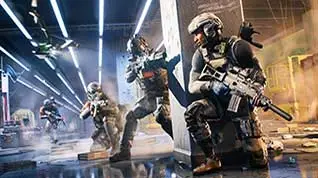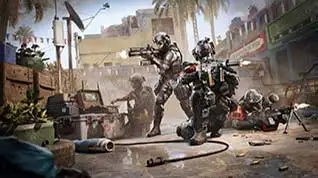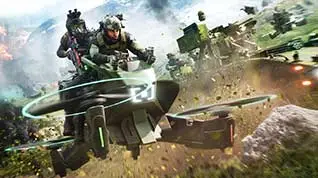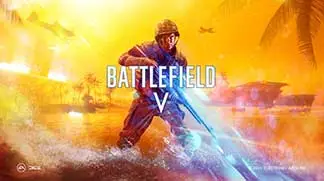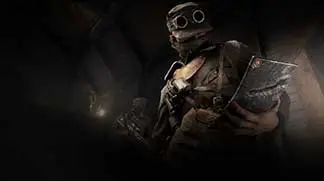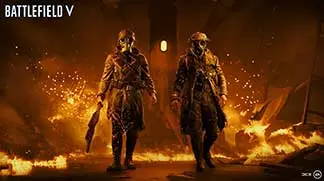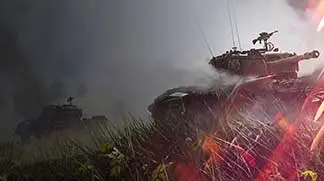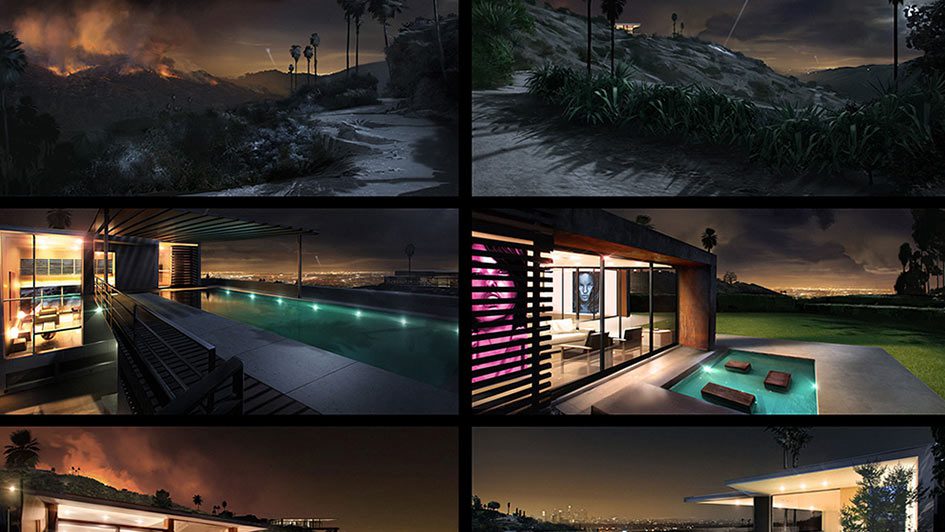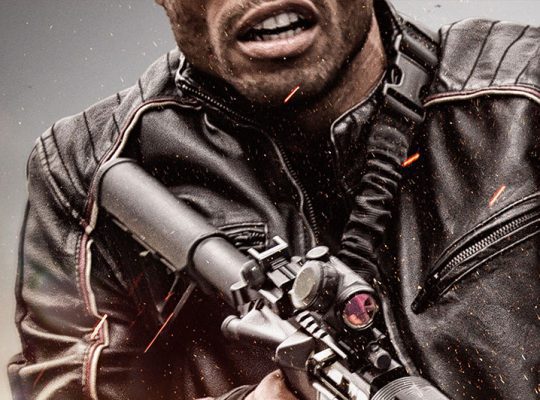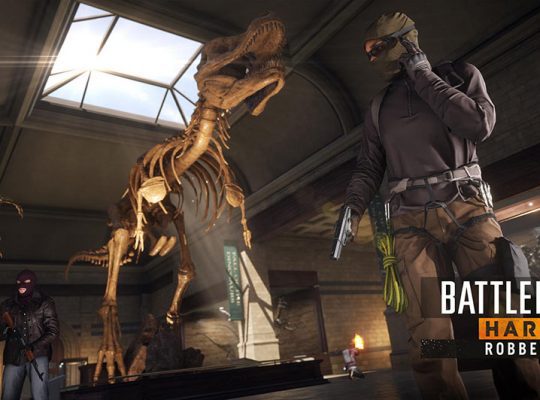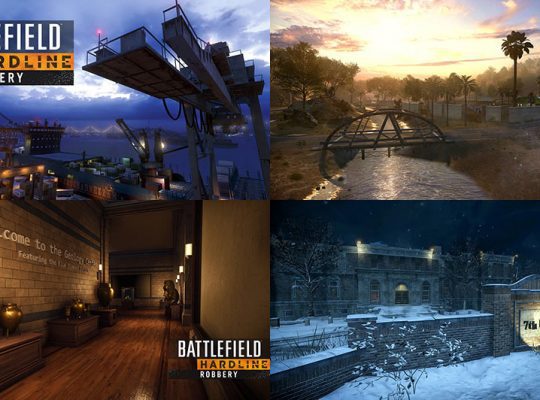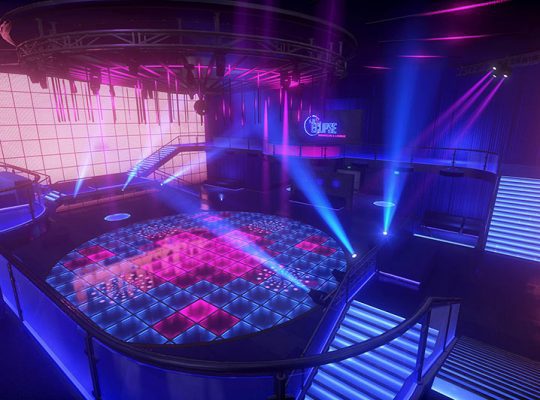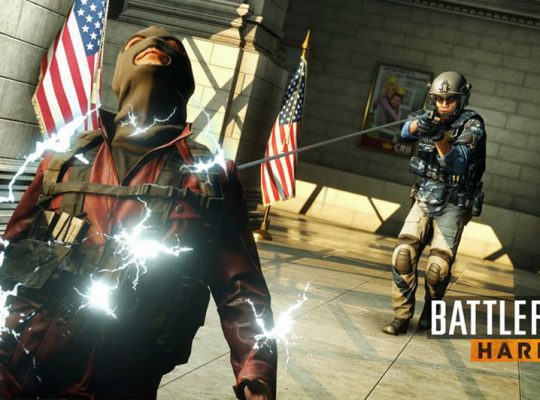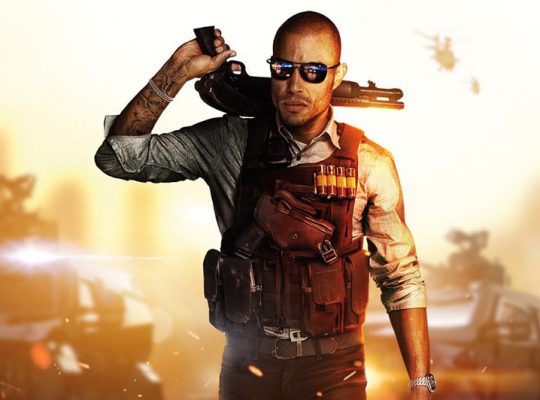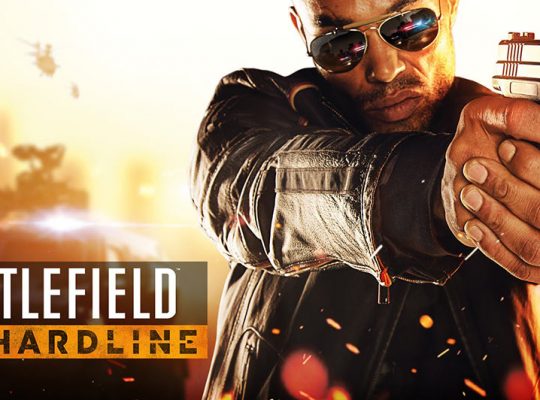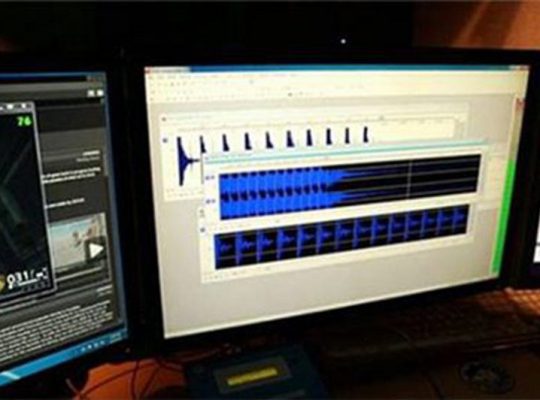Battlefield Hardline Concept Art Explored – Creative Director Ian Milham and Sr. Concept Artist Patrick O’Keefe let you explore some of the Concept Artwork for the upcoming shooter Battlefield Hardline.
How would you describe the art style of Battlefield Hardline?
We’re going for a heightened, dramatic realism. We’re not worried about authenticity so much as believability. Our maps are based on real places without being dictated by them. We want them to be quickly readable to keep players focused on the objective, but full of enough details and secrets to reward deep investigation.

What were some of the influences that contributed to the look and feel of Battlefield Hardline?
We were looking at a lot of Michael Mann movies (Heat, Collateral, Thief, Miami Vice), which have a lot of graphic simplicity and cinematic framing. For tone and vibe, Elmore Leonard was a big influence, and the works which have come from his books (Justified, Out of Sight, Jackie Brown, etc.)

What stands out about the early days of bringing the concept of Battlefield Hardline to life?
It took a long time to find the right look. You’d think maybe that doing a game set in the real world with real places would be easier than making it up, but we found it harder. Everyone’s detector is finely honed for the real world. If it’s not believable, it’s immediately noticeable compared to what you can get away with in a fantasy or sci-fi environment.
So it took many iterations of drawing, building, drawing over that, and collecting reference to find the right scale and look for something that passed the reality test, but actually was very stylized for our needs.
Take us through the process of designing a multiplayer level map. What are the main principles you keep in mind as you work?
The first paintings we do are all atmosphere, lighting, and inspiration. That’s because the map is going through a LONG playtest iteration period in the beginning. Months of laying out, playing, and re-building. They are looking at the lanes, landmarks, flow, and other factors. Once that’s relatively settled, we can get down to artistic business.
The first thing after that is readability. If a player were spawned anywhere on this map (say, off a teammate) would they immediately know where they are and which direction is which? Here we use lighting and landmarking to help the player. Only after all that is pretty set do we go in with real detail and finish out the map.

How does the art direction of the game help drive the story home for fans?
Story really comes in that last phase. For instance, on “Bank Job” you can see how the first criminal team must’ve gone into the bank before the round starts, with the blown open doors in the front providing a distraction, and the strike team eliminating guards in the back. We also put in all the culture and signage around the world to help it feel like a real place and not just a “multiplayer map.”
What are some of the finer point details fans can see in the multiplayer maps?
Being in an urban environment means a lot of signage and graffiti. One of our concept artists has a street art background, and he wanted to make them as authentic as possible. There are many, many in-side jokes and references in the stores and graffiti. Some nods include prominent team members, characters from previous Visceral and DICE games, and other details.
In terms of general workflow, what’s a typical day like for you?
It depends a lot on which phase of the production we’re in. We’ve got an incredibly talented and driven art team, and once direction is set, they do most of their work on their own. I’m checking in with them as often as needed, but they don’t need me holding their hand.
I think people would be surprised mostly at the amount of time I spend with non-artists. Great games have all the elements working together. Frequently I’m working alongside the designers, engineers or other game makers on the team making sure the art meshes with what they’re doing and that art’s needs are represented in the game as a whole.
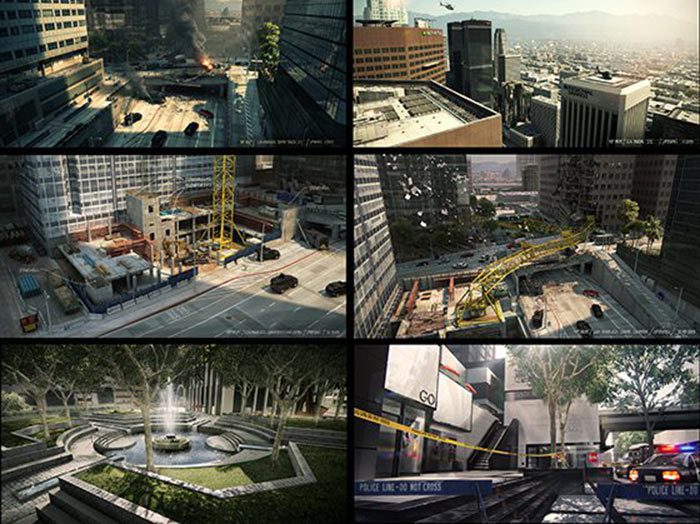
What keeps you up at night?
Doing right by the Battlefield name. Working on this title is a huge honor that we don’t take lightly. Fans will rightfully hold this game to a very high standard, and we want to do right by them.
How did you get started working in video games?
I was an illustration major in school. When games moved to CDs in the mid-90’s, suddenly they had much more space for stored images and graphics. This allowed for background paintings, and my first job in games was doing those paintings. Back then, art teams were small, and we all ended up doing all the jobs. That gave me a good understanding of how all the art disciplines worked together and prepared me for being an Art Director and later a Creative Director. The teams since then have gotten much bigger, but a lot of the principles of working together are the same.
What are you most proud of working on during your career?
That’s difficult to answer, since so many productions are so different and special. I’ll say that Battlefield Hardline is shaping up to be by far the biggest game I’ve worked on. And entertaining that many people and providing them with a good time is something I’m quite proud of.



